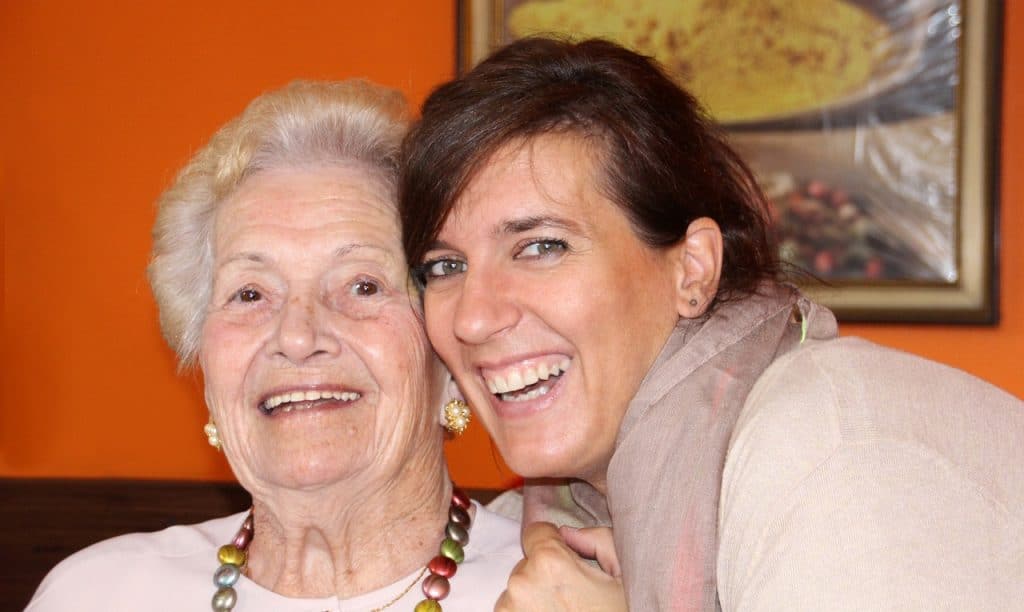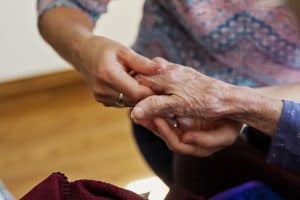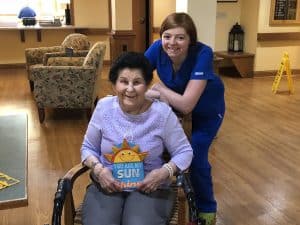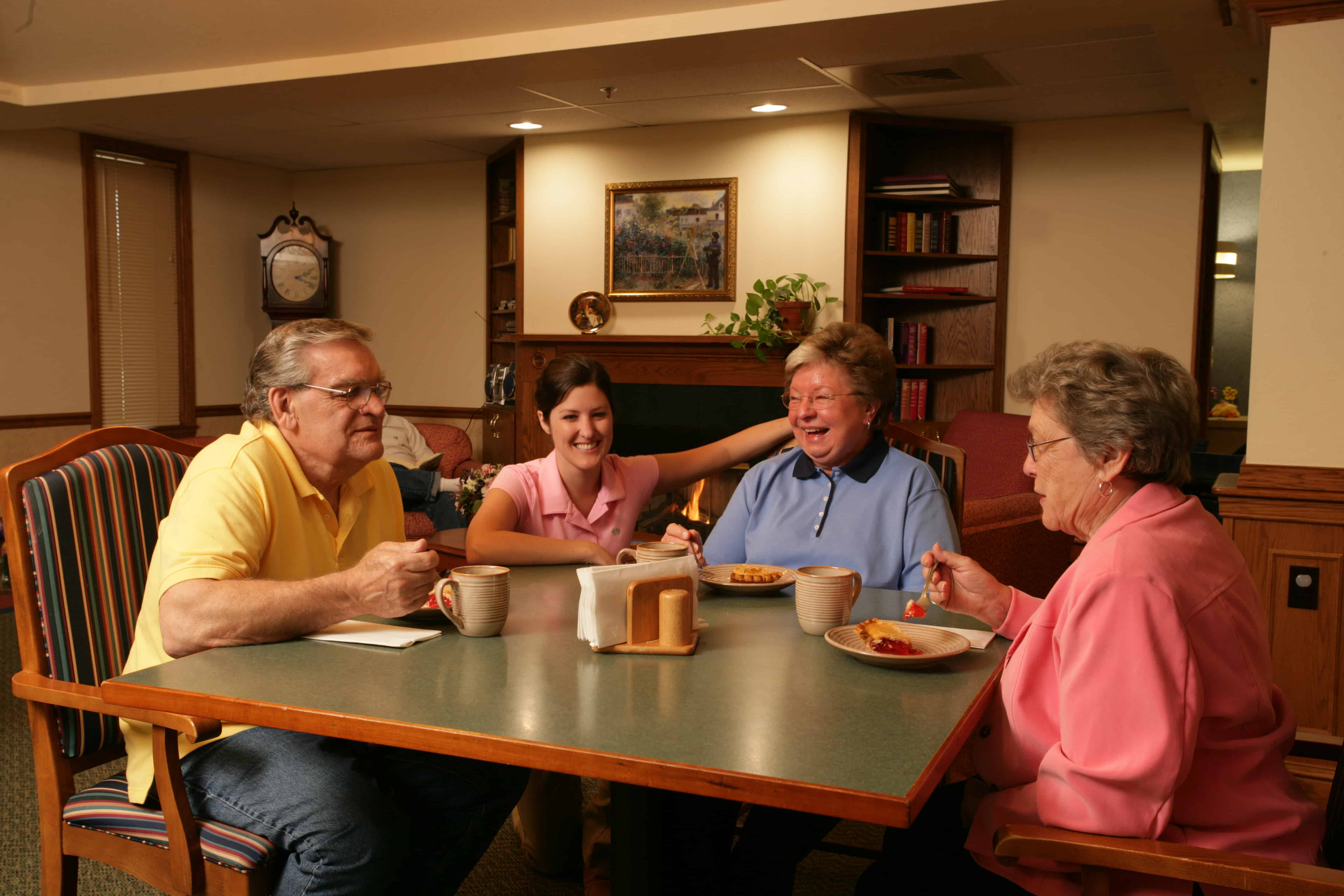The Non-Negotiables

How to Search for a Quality, Caring Senior Living Community
By Tara Pichelmeyer, Senior Living Advisor, Valley VNA Senior Care
Emotional, physical, financial, and geographical factors all impact the choice of a loved one’s senior living community, but some factors are simply non-negotiable, especially safety and trustworthiness. Ideally, a family will prepare in advance for a move, but many more times they must decide quickly after an illness or medical emergency. If you are able to visit several places during your search, you will discover how different they all are. Please choose wisely! Here is a list of five non-negotiables I like to share with families:
Non-Negotiable #1: They provide quality, resident-centered care.
As people age, their needs will change for the long or short term. If mom moves into an apartment and graduates to needing more assistance, how do you add services? What if she needs a short period of extra help, such as recovery from an illness or surgery? Will she have to move to  a new room, or will she be able to stay in her original apartment? Your advisor should be able to explain what happens and how family members are kept informed.
a new room, or will she be able to stay in her original apartment? Your advisor should be able to explain what happens and how family members are kept informed.
Remember to ask for a list of references. Your guide should be prepared to immediately send or give you a list of current employees and residents’ family members who can speak to the authentic culture of the organization. If you are comparing brand new facilities with established ones, be aware that the newer places will most likely not have a bank of knowledgeable references.
Ask who owns the senior community. Ownership structure significantly impacts how funds are distributed or reinvested. There are both for-profit and non-profit assisted living facilities. Non-profit organizations are required to reinvest their earnings back into the organization and the well-being of its residents, whereas for-profit organizations are not.
Non-Negotiable #2: They are clean and safe for residents.
Cleanliness in an assisted living environment is non-negotiable. To protect the health and safety of all residents and staff, the best assisted living communities invest in consistent property maintenance and cleanliness. Staff members are meticulous about their own personal hygiene as well as the grooming and hygiene of residents.
 Resident safety is closely tied to caregiver training and experience. The longevity of caregivers and registered nurses is an important reflection on their job satisfaction. Full-time registered nurses on staff are important for developing each person’s individual care plan and supervising CNAs and other caregivers if they uncover a medical concern. Registered nurses are also a great help in communicating effectively with a resident’s doctors and specialists. Ask if RNs work on staff, how long they’ve been on staff, and how direct caregivers are trained.
Resident safety is closely tied to caregiver training and experience. The longevity of caregivers and registered nurses is an important reflection on their job satisfaction. Full-time registered nurses on staff are important for developing each person’s individual care plan and supervising CNAs and other caregivers if they uncover a medical concern. Registered nurses are also a great help in communicating effectively with a resident’s doctors and specialists. Ask if RNs work on staff, how long they’ve been on staff, and how direct caregivers are trained.
Learn about the community’s 24-hour procedures for addressing problems that may arise. If you are looking at assisted living-level care, ask for accreditation documentation, because it will prove the safety and care audits the staff has passed—a big deal when it comes to complex medication management, chronic disease management, and caring for people with Alzheimer’s or dementia.
Non-Negotiable #3: They are designed to feel like home.
For many residents of senior living communities, the move from home can be one of the most traumatic events of their later years. Cheerfully  decorated and comfortable living areas and gathering spaces can ease that transition. For example, one lounge may be dedicated to quiet table games while another has a large-screen TV for football games or family parties. Residents assign meaning to each space and seek out the place and activity where their friends are, almost like pleasant neighborhoods.
decorated and comfortable living areas and gathering spaces can ease that transition. For example, one lounge may be dedicated to quiet table games while another has a large-screen TV for football games or family parties. Residents assign meaning to each space and seek out the place and activity where their friends are, almost like pleasant neighborhoods.
Also, is it obvious that experts who specialize in senior housing environments have been consulted? If so, you will see a mix of warm and cool tones, both energizing and soothing. Carpet color and texture should be chosen to minimize falling hazards, and individual apartments should come in neutral colors so residents can personalize their homes. Sometimes people are even given the choice of accent colors for their living rooms or kitchens—and maintenance staff will paint it for them. All this says a lot about how a senior community values its individual members.
Non-Negotiable #4: They welcome family and friends.
 Family and friends play a vital role in a senior person’s emotional well-being. Great senior living communities welcome visitors for everything from scheduled activities to which family members are specifically invited, to impromptu visits. Ask how to get activity updates online, and you will see how much thought goes into planning enrichment activities for residents. Also inquire about how to call ahead to have food prepared for you so you can share a meal when you arrive—and get a taste of what’s on the menu. (Meal charges are typically applied to the resident’s monthly bill.) Ask if you can reserve a room for a larger family group, and bring them in to see where your loved one now lives. Not only will you enjoy your visit, staff should greet you warmly and welcome your questions and observations.
Family and friends play a vital role in a senior person’s emotional well-being. Great senior living communities welcome visitors for everything from scheduled activities to which family members are specifically invited, to impromptu visits. Ask how to get activity updates online, and you will see how much thought goes into planning enrichment activities for residents. Also inquire about how to call ahead to have food prepared for you so you can share a meal when you arrive—and get a taste of what’s on the menu. (Meal charges are typically applied to the resident’s monthly bill.) Ask if you can reserve a room for a larger family group, and bring them in to see where your loved one now lives. Not only will you enjoy your visit, staff should greet you warmly and welcome your questions and observations.
Non-Negotiable #5: They allow residents to pursue things that feed their soul.
 From social clubs to raised bed gardens, the best senior living communities offer opportunities for older adults to pursue their passions. It’s especially important to offer people the chance to stay engaged with the larger community, whether its rickshaw rides, van excursions, or visiting performers who visit from the local high school. Look for a complete schedule of activities that includes arts and crafts, exercise and stretching, music, trivia, worship, and cooking. If your loved one has a special hobby, ask how he or she can showcase those talents. Most of all, choose a community that celebrates each person’s individuality. That’s simply non-negotiable.
From social clubs to raised bed gardens, the best senior living communities offer opportunities for older adults to pursue their passions. It’s especially important to offer people the chance to stay engaged with the larger community, whether its rickshaw rides, van excursions, or visiting performers who visit from the local high school. Look for a complete schedule of activities that includes arts and crafts, exercise and stretching, music, trivia, worship, and cooking. If your loved one has a special hobby, ask how he or she can showcase those talents. Most of all, choose a community that celebrates each person’s individuality. That’s simply non-negotiable.





